For the experienced green thumb, gardening is a lot like a dance. Once you learn the basic steps, you can usually hold your own in any space and improvise until you get to the really advanced moves. If you’re dancing, you probably want to master the box step before you try to tango. If you’re gardening, it’s best to focus on things like pruning before you try to grow prize-winning azaleas.
When it comes to basic gardening practices like pruning, timing is everything. It is just as important to know when to cut as it is to know where to cut. So, when is the best time for heavy pruning?
What to Know About Heavy Pruning
Tradition v Heavy Pruning
All plants will require some type of pruning from time to time. Typical or traditional pruning should be conducted on a regular basis. This type of pruning is to remove small, dead parts of your plants that may inhibit growth.
Ultimately, the purpose of pruning is to promote growth, so your plants can reach their full potential. Heavy pruning is strategic pruning that goes further than regular trimming for your plants. This type of pruning must be completed at specific points throughout the year, depending on the plant to maximize growth.
In contrast from traditional pruning, heavy pruning will typically consist of cutting a plant all the way back to a height of 6-12 inches above the ground and allowing it to regrow. It is important to use the appropriate shears to trim back your plants and shrubs as this type of drastic cutting is not tolerable for all plant types. Talk with your landscaping maintenance provider about the best tools to use on your unique plants.
Best Times for Heavy Pruning
To truly embrace the benefits of heavy pruning, tree trimming for certain plants should be addressed at specific times.
When heavy pruning, you are significantly cutting back your plants to give them the opportunity to grow back with gusto. It is important to make these heavy cuts at a time when the plants have the best environment to grow.
According to the Chicago Botanic Garden professionals, heavy pruning should be completed when a tree is dormant, usually in the later winter months, before active growth will begin. Not only will heavy pruning at this time help you to maximize growth, but it can also prevent certain fungal diseases that can occur in some trees.
Timing for pruning truly depends on what it is that you are pruning. Those at the Chicago Botanic Garden also assert that “Most conifers require minimal pruning that will also vary with species. Needled evergreens such as spruce (Picea) and fir (Abies) are best pruned in late winter before growth begins. Arborvitae (Thuja) and yew (Taxus) can be pruned during spring and early summer. Pruning of any kind can encourage new growth; therefore, pruning should not be performed late in the season to avoid the risk of cold temperatures damaging tender new growth.” Heavy pruning is a task that requires knowledge and forethought.
Contact The Parke Company Today
If you want to get the most out of your garden, pruning is one of the best ways to maximize growth and increase your landscape’s yield, but it does mean that whoever is conducting the pruning knows what they are doing.
You don’t need to be an expert landscape designer for a beautiful garden. You just need to hire the right landscaping company to meet your specific needs.
From leaf removal to landscape installations, the Parke Company’s experienced professionals are ready to develop a landscaping plan that works for your property and your budget. Don’t leave your garden’s health up to chance. Give us a call (615-350-6033) or contact us online today to see how The Parke Company difference can work for you.
